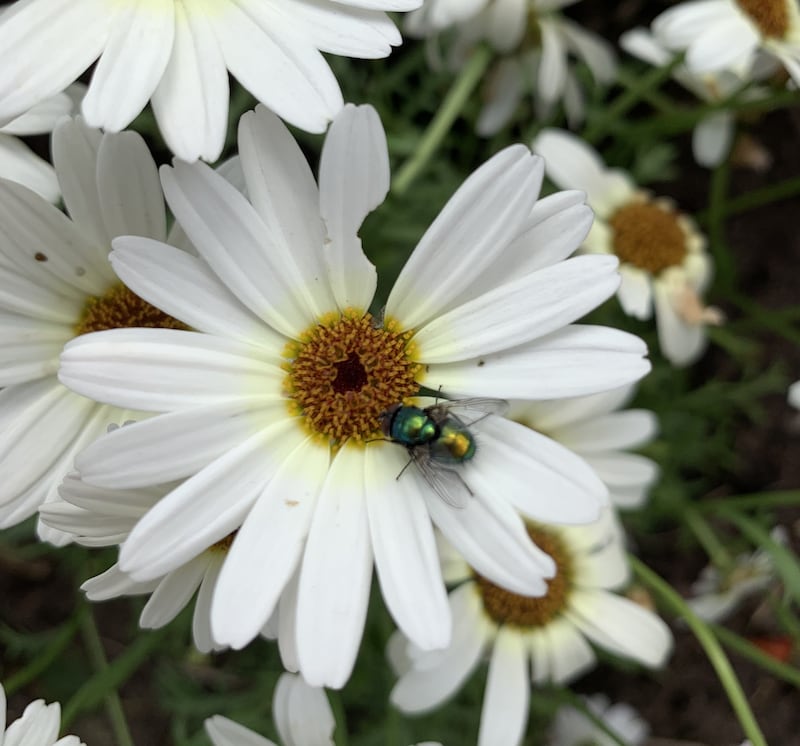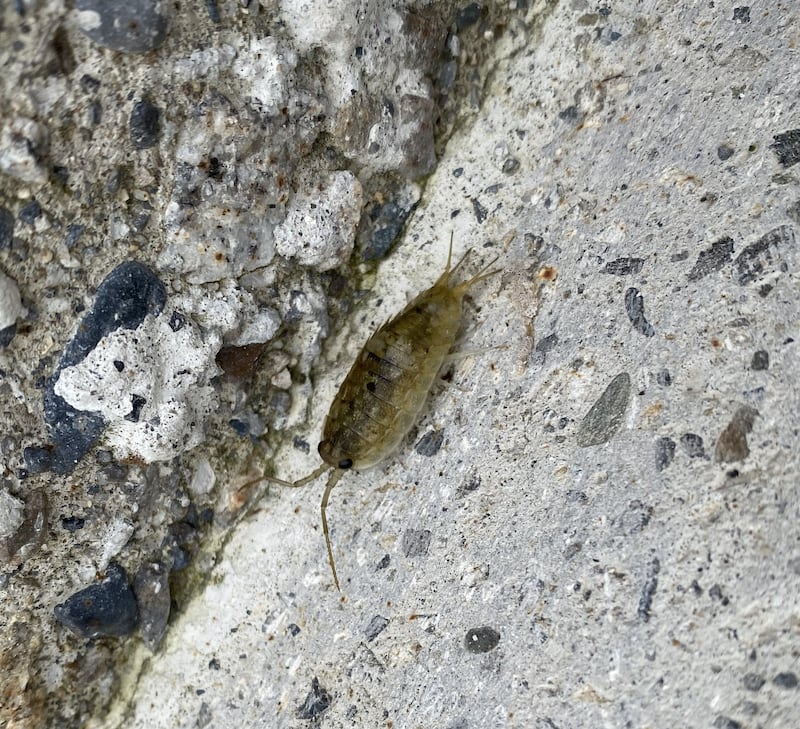I found this butterfly in my garden recently. What species is it? David Grove, Dublin
It is a female holly blue butterfly. There are two, or even three generations a year. The spring generation seeks out holly flowers on which to lay its eggs, while the summer-autumn generation lays eggs on ivy flowers, one egg per flower bud. The larvae feed on the top flower buds in the inflorescence. They can be attended by ants who lick sugary secretions from the pores of the subsequent overwintering pupae.

Within minutes of planting my new marguerite, this greenbottle and other unfamiliar winged creatures set up home. What are they up to and what likes to gobble them up? N Ryan, Cork
Just shows how good your marguerite is for attracting insects. The greenbottle Lucilia caesar feeds on nectar as an adult, so it obviously couldn’t believe its luck when you planted the lovely nectar-rich flower. The young maggots feed on carrion and dead meat and thus perform a very essential ecological service breaking these down and getting rid of them. Flies are part of the diet of spiders, birds, frogs and so on, while fly maggots are eaten by ducks.
RM Block

I saw this creature at the baths in Dún Laoghaire and was wondering what he was. Anon, Co Dublin
It is a sea slater, Ligia oceanica, which strongly resembles a woodlouse and is indeed a member of the isopod order. Its habitat is rocks above the intertidal zone, where it scavenges for food at night among the washed-up seaweed and other debris. It is a detritivore and eats dead scraps of seaweed. You can’t assume it’s a male. You would have to see two together to notice that the male antennae are longer and wider than those of the female.

I saw this unusual bug at our house in Mervue, Galway. It was flying and landed on our bin, which was also attracting flies at the time. I think it is some kind of shield bug. Can you please identify it. John Finnerty, Galway
It is a sexton beetle, also known as a burying beetle. It seeks out dead carcasses of small mammals such as mice, which a pair bury and then the female lays eggs around the buried body. When the larvae hatch out, the corpse becomes their food. Both itself and the flies must have thought they smelt a dead mouse in your dustbin.

While in Connemara, I came across this female moth. She was attended by a scrum of eight suitors. Once this one won out, all the others promptly flew off. Which moth is it? Bernard Feeney, Dublin
It is most likely the northern eggar moth, which is a subspecies of the oak eggar. The much smaller and darker males fly by day in a mad zigzag fashion seeking out unmated females by their scent, which is what you witnessed. The winner takes all and afterwards the female flies about, dropping her eggs at random in vegetation below. The larvae hatch out and go into hibernation shortly afterwards.
I saw these dead fish in a river that flows through Cuilcagh Mountain Park in Co Fermanagh. Would you know the name of the species? The rivers on Cuilcagh Mountain flow into the Shannon Pot, one of the main sources of the river Shannon. Laurence Speight
I consulted with Ken Whelan, a fisheries scientist, who said that while it was a salmonid of some sort, it was impossible to identify it from this ventral or upside-down image. An image of the dorsal surface, the flank or the head would be much more revealing. More worrying is: what killed the fish?
Please submit your nature query, observation, or photo with a location, via irishtimes.com/eyeonnature
















